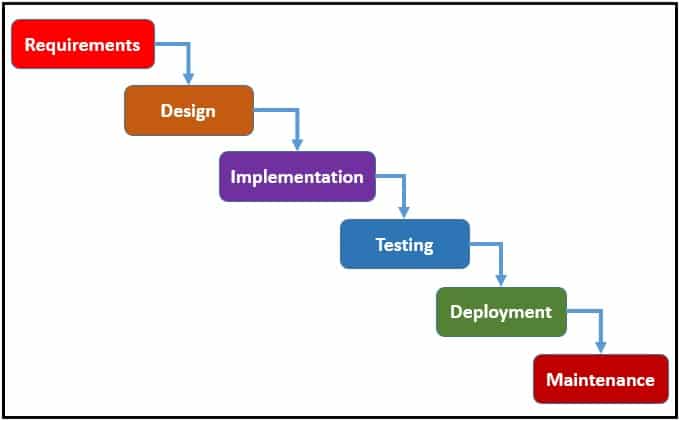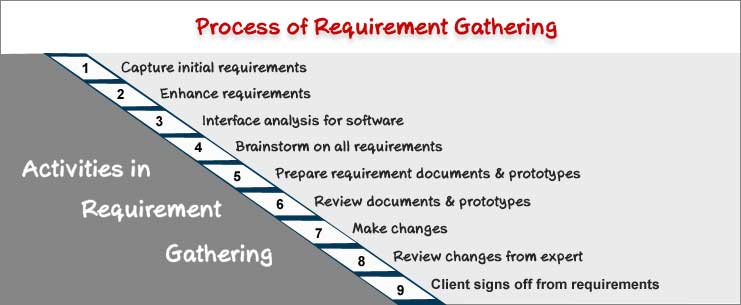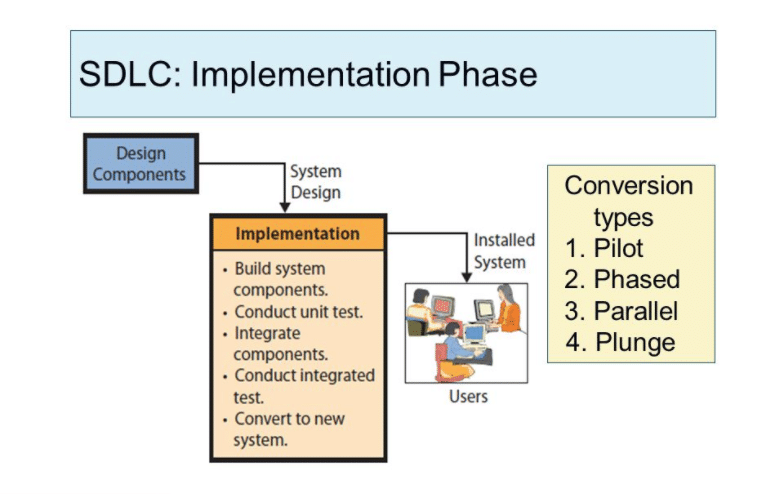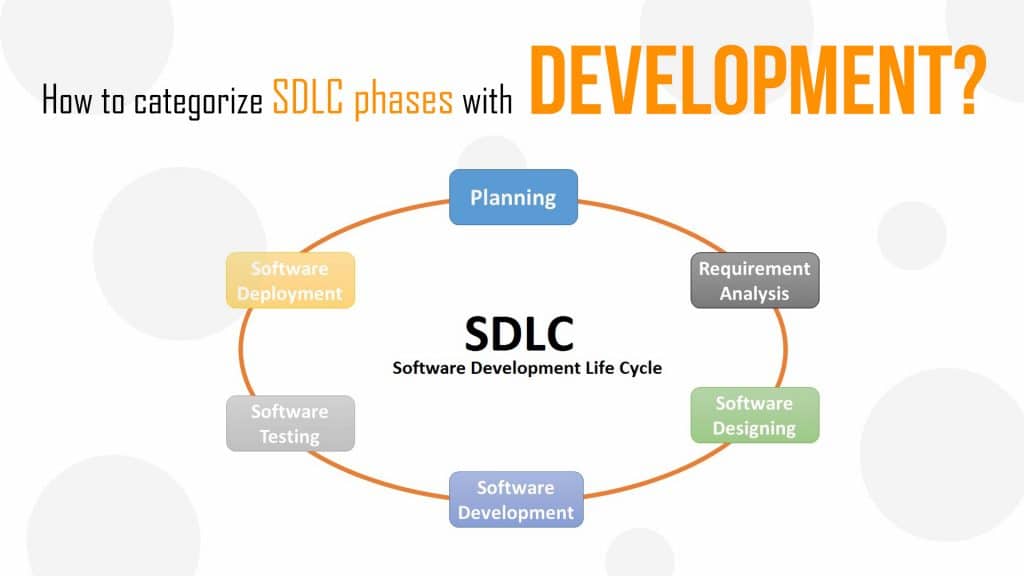In my earlier blog, I introduced you all to STLC Phases. Now, it’s time to understand and enhance your knowledge about Software Development Life Cycle (SDLC) phases.
The Software Development Life Cycle (SDLC), also known as the Application Development Life Cycle, is a term in systems engineering, information systems, and software engineering to illustrate a mechanism for planning, creating, testing, and deploying an information system. Software Development Life Cycle or SDLC is a process to establish software.
The Systems Development Life Cycle approach employs a range of hardware and software configurations. This is true because the system can be composed of hardware only, software only, or a combination of both.
Jump to Section
Importance of the SDLC
If a business determines a change is required during any phase of the Software Development Life Cycle (SDLC), the company might have to proceed through all the above life cycle phases again.
The phases of the Software Development Life Cycle are highly essential for developers during developing any web application, such as planning, analysis, design, and implementation. It includes information gathering, feasibility study, and request approval.
Systems development specialists at Innovative Architects possess extensive experience in managing these types of projects. If you have a situation in your organization and you think a customized software solution may be what you need, contact us today.
Software Development Life Cycle (SDLC) phases
There are different software development approaches that are employed during the development process of software. Those approaches are also known as “Software Development Process Models”.
They are the following Software Development Process Models which are given below:
- Waterfall model,
- Incremental model,
- V-model,
- Iterative model,
- RAD model,
- Agile model,
- Spiral model,
- Prototype model etc.
The oldest of these is the waterfall model which is also known as the “Linear-Sequential Life Cycle Model”. This model is a sequence of stages in which the output of each stage becomes the input for the next. Every Software Development Process Models pursue a particular life cycle in order to establish success in process of software development.
Phases of the Software Development Life Cycle (SDLC)
- Requirement gathering and analysis
- Design
- Implementation or coding
- Testing
- Deployment
- Maintenance

Let’s have a look at each phase of the Software Development Life Cycle (SDLC) in Detail.
What Is the Requirement Gathering and Analysis Phase in SDLC?
This is the first phase of the Software Development Life Cycle. In this phase, the requirement is given by Clients or customer analytics and business requirements accumulate in this phase.
What to Do in the Requirement Gathering and Analysis Phase of SDLC?
In the requirement gathering and analysis phase, sessions with managers, stakeholders, and users are held in order to regulate the requirements and to understand each and every point of the requirement like;
- “Who is going to use the system?“
- “How will they use the system?“
- “What data should be output by the system?“
The above questions should be answered during the requirements gathering phase. After requirement gathering, the requirements are given by the client or customer to analyze their validity. Also, follow-up planning is done accordingly. The project managers and stakeholders will play an important role in this phase, to understand the complete requirement.

Finally, a Software Requirement Specification document (which is sometimes known as SRS document), the design which delivers the purpose of guideline for the later phase of the model. After this, the testing team starts following the Software Testing Life Cycle. The Test Planning phase starts after the requirements analysis which is concluding by the testing team.
What Is the “Design” Phase in SDLC?
The “Design” phase is the second phase of the Software Development Life Cycle (SDLC). From the requirement specifications, the system and software design prepare in this phase as it concludes in the first phase that is Requirement gathering and analysis. The prepared system and software design help in coding during development.
What to Do in the “Design” Phase of SDLC?
System Design aids in determining hardware and system requirements and also aid in defining whole system architecture. The system design specifications server as input for the next phase of the model.

In this phase, the testers arrive with the Test strategy, where they utterance or mention “what to test”, “how to test” the developed application.
What Is the “Implementation/Coding” phase in SDLC?
To get system design documents from the previous phase, the work is the branch in modules or units. After that, the actual coding starts. This is so since, in the implementation or coding phase, the code composes as it’s the main focus for the developer.
This is the longest phase of the whole software development life cycle, as the coding is a very tough task, and it will take time to code and develop each and every single unit, which will integrate to make a complete system.
What to Do in the “Implementation OR Coding” phase of SDLC?
In the implementation or coding phase, database admins build the required data in the database. Additionally, the front-end developers build the required interfaces and GUI to collaborate with the back-end as all based on guidelines and procedures introduced by the company.

Developers also create their unit test cases for each and every component to examine the latest code that they have authored, reviewing each other’s code, create builds, and deploy software to an environment. This cycle of software development repeats until the requirements are met.
What Is the “Testing” Phase in SDLC?
The testing phase of the software development lifecycle (SDLC) is where you focus on examination and discovery. In this phase, developers find out whether the programming and code written by them are working according to customer requirements. Also, it is not possible to solve all the faults you might find during the testing phase. But, it is possible to use the results from this phase to reduce the number of errors within the software program.
What to Do in the “Testing” Phase of SDLC?
Before software testing can begin, the project team creates a test plan. This created test plan consists of the types of testing you’ll be using, resources needed for testing, how the software will be tested, who should be the testers during each phase, and test scripts, which are instructions each tester uses to test the software. Test scripts ensure consistency while testing.
There are different types of testing during the test phase. These include quality assurance testing (QA), system integration testing (SIT), and user acceptance testing (UAT). All types of testing are considered in this Phase. The testing starts with testing a single unit to the testing of the complete system after integrating the unit module. Hence in this phase, the testers generally test the complete application, and if any bug is present, then it has been log by them to respective developers.
In the Testing Phase of SDLC, the complete application goes to different phases of the Software Testing Life Cycle (STLC). From the understanding of the requirement by the testing team till the test reporting phase. There are actually different Phases of STLC including:
- Requirement analysis
- Test Planning
- Test case development
- Environment Setup
- Test Execution
- Test Reporting
Test Reporting is the last phase of STLC. After this phase, all the bugs fixes and the bug reports deliver to the client if it exists. The types of testing that may be relevant, depending on the type of system under development, which is given below:
- Testing of Defect
- Path testing
- Dataset testing
- Unit testing
- System testing
- Integration testing
- Black-box testing
- White-box testing
- Regression testing
- Automation testing.
- User acceptance testing
- Software performance testing
What is “Deployment” phase in SDLC?
After successful testing, the developed product delivers or deploy at the customer’s end for their use. Once the software has been completely transforming into a bug-free product or application, and no high priority bugs persist in the software, now it is time to deploy to production where customers or end-users will use the product. When the deployment phase is running, then all the bugs present in the above phase that is in the “Testing” phase are fixes.

What to do in “Deployment” phase of SDLC?
As soon as the developed product delivers to the customers or end-users they will first do the beta testing. If any changes are required, or if any bugs are present during beta testing, then they will report it to the project team. Once those required changes are complete or the present bugs get their fixes, then the final deployment will be complete.
Soon after the deployment of the application to the production server, the normal users or customers will start accessing the developed and deployed application. Then, it is time to plan for maintenance. Some bugs will be found by the end user’s or customer’s or client’s side. Those bugs can be fixed in the next phase that is the “Maintenance” Phase.
What Is the “Maintenance” phase in SDLC?
The actual problems come up and need to be checked from time to time and solved accordingly. Prepare for this fact once the customers or end-users start working on the developed product or application.
Then the care of process performs on the product is known as “Maintenance”. This is the last phase of the Software Development Life Cycle. This is an ongoing process that requires when any bugs found by end-users or customers or clients, or at the maintenance time, which schedule time to time.

What to Do in the “Maintenance” Phase of SDLC?
This is the phase that comes just after the deployment phase. The maintenance team will look after any post-production issues or bugs once a version of the software releases to the production environment. The post-production bugs may introduce the software releases to the production environment. The maintenance of any application needs time so that the application can respond properly.
Strengths and Weaknesses of Software Development Life Cycle
Now some people in the modern world would use a strict Linear sequential model which is as known as the Waterfall Model for their Software development Life Cycle. However, many modern methodologies have replaced this thinking. Some of them will argue that the Software development Life Cycle no longer applies to models like Agile methodology, but it is still a term which widely in use in the technology world.
The comparison between the Strengths and Weakness of the Software Development Life Cycle are:
Strengths of SDLC |
Weaknesses of SDLC |
|---|---|
|
|
|
|
|
|
|
|
|
|
|
|
|
|
|
|
|
Final Words
In this post, I have covered all major points or you can say major topics related to Software Development Life Cycle (SDLC). All the phases in the SDLC explained in this blog are applicable to all software development methodology, but the duration and the activities in each phase depend on whether you are following the V Model development methodology or Agile development methodology.
- COVID-19: How We Are Dealing With It as a Company - March 23, 2020
- Agile Testing – The Only Way to Develop Quality Software - February 8, 2019
- How to Perform System Testing Using Various Types Techniques - May 16, 2018

